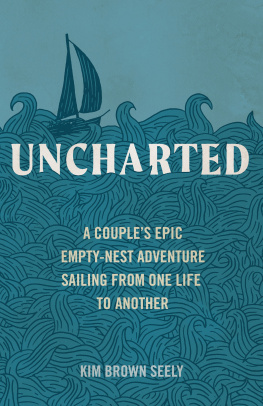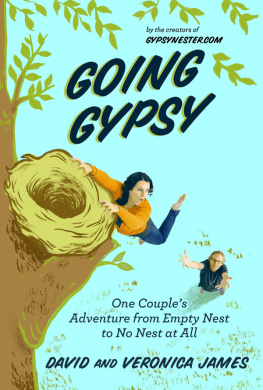To write this book I pulled out my sailing journals, researched history and facts when I could, compared notes with people who appear in the book, and called upon my own memory. I have tinkered with the chronology of a few events for the sake of narrative flow. Ive changed the names of some, but not all, of the people because not everyone Ive written about knew they were going to be characters in a book. That said, there are no composite characters in this book. These changes aside, this is a true story, constructed from memory.
PROLOGUE

The wind beat upon the white canvas, blowing an anthem like freedom. The sun was out, always a pleasant surprise in northern Canada; the sails were high, and we were higher, flying across a cold blue sea. Minutes before, wed been enjoying a long crossing, the boat heeled over, humming along. Now it was time to start the engine, bring in the sails, and motor through a maze of small rock islands. But when we turned the key, nothing. There was no charge, no reassuring rumble of safety. I took a deep breath and held it.
We hadnt left time to tack, hadnt planned on having to turn our big boat, and now we were barreling toward a rocky islet, me at the helm and my husband, Jeff, down below, banging a wrench on the starter. I stood at the sailboats wheel, twisting a tiny metal key in the ignitionpraying that the solenoid he was hammering would engage.
The key was pathetic. The island loomed closer. We werent going to make it.
Jeff shot up, released a line, and we slammed the boat hard to windward, coming about. I let out my breath, stunned.
We were alone together and had courted this chaos. We were grown-ups and peoples parents. Wed raised two sons together, battled cancer together, and lived on both coasts of North America together. When our sons left home, wed found ourselves on one of those coasts with a window of time, and so wed launched ourselves into it. But now, with a boat whose moods changed as mercurially as our own, we were wrestling with forces larger than ourselves, and sometimes, paying a price.
We were immersed in a world that was brand-new for both of usit felt immediate yet eternal. I loved the rhythm of waves lapping at our boat; it seemed like a long-lost friend. We all have ocean in our veins. Back home at our house just outside Seattle, wed been dreaming of exploring this world for a while. Id first heard of it from a sailor Id met at a dinner; he was ferrying a well-known National Geographic photographer to a rarely visited part of British Columbias coast to shoot wildlife photos.
When the story came out a year later, I was slayed: on the cover of National Geographic there was an image of a white bear. There was something strange about the bear: it had fur the color of a yellow Lab. Even though it was a white bear or so-called spirit bear, it wasnt Arctic white like a polar bear, nor was it cinnamon brown like a grizzly. It was some weird vanilla-white in between. It reminded me of a mythical creaturelike what you might get if you crossed a bear with a dog. Its snout was brown and its paws were brown, but its claws were translucent. Across its shoulder blades matted tufts of fur stood up like theyd been dipped in orange marmalade.
Whats that?
A spirit bear, I told my husband, when he found me that fateful day frozen in front of our coffee table, staring at the yellow-bordered cover. It trumpeted, The Wildest Place in North America: Land of the Spirit Bear.
The spirit bear, I learned, was, in fact, a black bear born with a double-recessive gene causing white fur. It was a walking contradiction: a white black bear. Also known as the Kermode bear, it was raremore rare than the giant panda. I pictured fur and forest, rain and sea; bold explorers sailing off to distant wilderness islands and hiking through giant trees; Paul Nicklen, the National Geographic photographer, waiting in the woods for days and then weeks until the singular moment when he came upon this strange creature climbing a cedar.
This particular spirit bear had been photographed in British Columbias Great Bear Rainforest, part of planet Earths largest intact coastal temperate rainforest, at the far edge of the North American continent. More than thirteen thousand years before, humans lived alongside these bears. But now the region, which stretched from north of Vancouver Island to south of the Alaska Panhandlea rugged and complex maze of islands and fjords where vast swaths of cedar and spruce met the North Pacificwas about as remote as you can get in this world.
I have a weakness for remote. Never in my life have I wanted anything as much as I wanted to sail off in search of that spirit bear.
Our sons were leaving the nest, the economy was in free fall, our jobs were stagnant, and it seemed my husband and I had come to the edge of something: we could live safe, small lives or try something totally new by launching into the unknown. And so, the year before our second son left for college, we bought a gently worn sailboat.






















